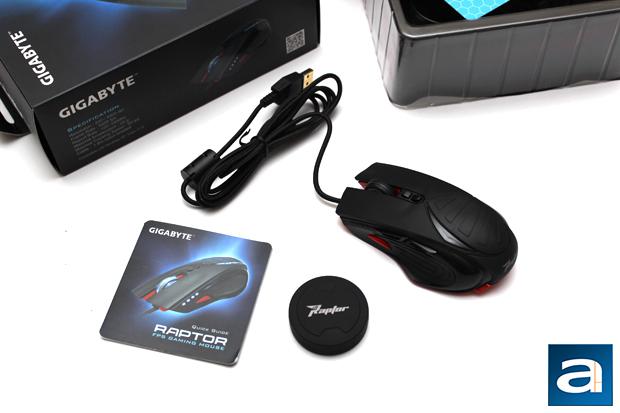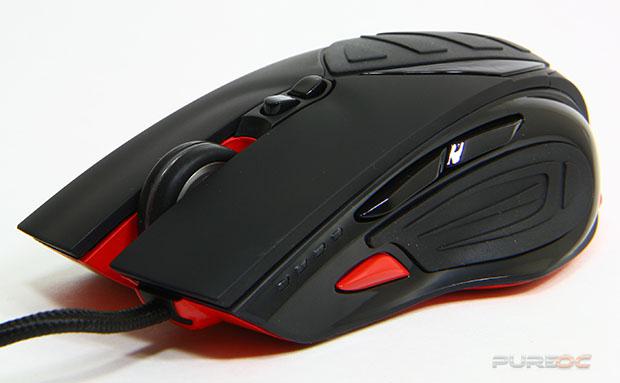Here a roundup of today's reviews and articles:
Corsair Gaming Sabre Optical RGB Gaming Mouse
Fujitsu Celsius W530 Review
Gigabyte Force M63 Optical Mouse Review
Gigabyte Raptor Gaming Mouse Review
How to Tell Whether Your Windows PC is Using a Proxy Server
Kingston HyperX Cloud II Pro Gaming Headset Review: Cloud and Clear
Sony Xperia Z3 Tablet Compact review: light in the hand, heavy on the wallet
Synology DS415play NAS Review
UleFone Be One Smartphone Review

Read full article @ APH Networks

Read full article @ PureOverclock
Corsair Gaming Sabre Optical RGB Gaming Mouse
Fujitsu Celsius W530 Review
Gigabyte Force M63 Optical Mouse Review
Gigabyte Raptor Gaming Mouse Review
How to Tell Whether Your Windows PC is Using a Proxy Server
Kingston HyperX Cloud II Pro Gaming Headset Review: Cloud and Clear
Sony Xperia Z3 Tablet Compact review: light in the hand, heavy on the wallet
Synology DS415play NAS Review
UleFone Be One Smartphone Review
Corsair Gaming Sabre Optical RGB Gaming Mouse
Corsair’s latest gaming mouse – the Sabre, ships with a high-end, 6,000 DPI Avago ADNS S3988 optical sensor, strong back-end software and an RGB LED colour system which lets you pick just about any colour for the backlighting.Read full article @ KitGuru
Of course a lot of its contemporaries ship with similar features, so Corsair has to work hard to stand out. Is it worth your hard earned money?
Fujitsu Celsius W530 Review
Desktop workstations can be both big and expensive, but not so the Fujitsu Celsius W530, a compact and affordable entry-level workstation designed to bridge the gap between high-end PCs and much more expensive professional models.Okay, so it's only got one processor, but that's reflected in the £1,430 recommended price (around $2,160, AU$2,680), and we found it selling for a lot less than that online. Moreover, with a more than capable Nvidia Quadro graphics card as standard, the Celsius comes equipped to handle not just CAD/CAM but advanced video editing, basic animation work and a lot more besides.Compact and well-designedAbout the same size as the average desk-side PC (6.9 x 16.5 x 15.6-inches, or 175 x 419 x 395mm), the Celsius chassis doesn't quite match the build quality of Dell's Precision range, but is nonetheless nicely laid out and well put together. Access is good, as well, with a fully removable side panel and lots of room inside, not least because of the diminutive Micro-ATX motherboard, which takes up hardly any space at all.Power comes from a standard 300 Watt supply with cooling handled by the fan in the PSU plus another fan mounted low down at the front of the casing. Most of the airflow from this goes across the motherboard, but there's also a metal baffle to direct some of it down to the storage bays in the bottom of the chassis. The graphics card also has a fan but, despite a tally of three altogether, the Celsius proved remarkably quiet even when pushed hard. Fujitsu calls it whisper quiet and, at around 16dB, we tend to agree.There's just the one processor socket on the motherboard able to accommodate either an Intel Core i7 or Xeon E3-1200 v3 processor. Fujitsu can equip the W530 with either, the review system shipping with a 3.6GHz Xeon E3-1271 v3 which is based on the latest Haswell architecture, offering up four processing cores or eight threads using Intel's Hyper-Threading technology.Read full article @ Techradar
Gigabyte Force M63 Optical Mouse Review
During the first few weeks of starting in my job, one of the biggest things I learned was the SOLID principles of programming. Each of the letters stands for a certain principle, so I started from the beginning. The first letter S stands for Single Responsibility Principle, or SRP. In essence, SRP states every class should only have one responsibility. This responsibility should be completely covered by the class. By focusing on a single concern, classes will be more robust, as it will not inadvertently change other things without the users' knowledge. Furthermore, it allows for better reuse of the code, because future users of this will know exactly what its purpose is, without worrying about side effects. This type of principle can extend outside of programming too. For example, pliers are all trying to accomplish a similar task, but there are specific ones made for different tasks. There are pump pliers, whose main purpose is to act like a wrench, and then there are long nose pliers to reach narrower places. You would not try to use pump pliers in your computer case, nor would you not use a needle nose on bathroom pipes; each of these pliers have their own responsibility. On the other hand, Single Responsibility Principle refers to a class, and not to software as a whole. If your word processor could only type words, but would not open old documents, import in photos, or copy and paste, you would probably look elsewhere for a more competent program. While there are probably specific components accomplishing each of the above tasks, they work together to make a capable piece of software. When I see technology products targeted primarily for a certain purpose, I have to admit I am a bit weary of them. This mouse today, the Gigabyte Force M63, is labeled as a first person shooter gaming mouse, and I can only wonder if this mouse is only for this genre of games. Does it follow the single responsibility principle in a negative way, or can it perform for all kinds of usage? Hopefully this review will answer your questions, and more, so let us read on to find out!

Read full article @ APH Networks
Gigabyte Raptor Gaming Mouse Review
We’ve seen several large companies branch out into various areas of the market, and certainly into the gaming peripheral realm. Gigabyte is one such company, historically known for motherboards and graphics cards, but looking to make a mark through both its Aivia gaming moniker, and standalone AORUS spinoff. It’s an interesting setup, and we haven’t seen many gaming peripherals from Gigabyte of late.

Read full article @ PureOverclock
How to Tell Whether Your Windows PC is Using a Proxy Server
While researching for our article about what happens when you install crapware from a really lousy download site, we noticed that some of the crapware and spyware will actually try to install a proxy server to spy on you. So how do you know if your PC is using a proxy?Read full article @ Howtogeek
Kingston HyperX Cloud II Pro Gaming Headset Review: Cloud and Clear
Two years ago, I walked into the Emperor's Ballroom in Caesar's Palace hotel in Las Vegas Nevada wearing khakis and a golf-shirt, feeling woefullyRead full article @ Modders-Inc
underdressed for the venue as I did not exactly pack a ball gown nor do I look good in one. The room had high ornate coffered ceilings, triumphal
arches, elaborate carpeting and real marble floors, all …
Sony Xperia Z3 Tablet Compact review: light in the hand, heavy on the wallet
Sony's consumer electronics division is in an ongoing state of flux. Having already given up on PCs and e-readers, the company recently pledged to make fewer TVs and smartphones in a bid to get its books back in the black.Read full article @ Engadget
Synology DS415play NAS Review
Synology presents itself with another high-quality NAS model, the DS415Play which is oriented to home users with plenty of multimedia content for playback on different devices. Thanks to the Intel solution, unsupported file formats will be converted for different devices on-the fly so they will be played without additional issues. The 1.6GHz dual-core processor is paired with a total of 1GB DDR3 (non-upgradable) and the manufacturer is still using the proven 4-bay plastic chassis which we have seen with the DS412+.Read full article @ Madshrimps
UleFone Be One Smartphone Review
The Be One model from UleFone sports a newer Android version than Kolina K100+ V6, 4.4.2 and we have promises Android 5.0 will be also available for this model. Speaking of the device performances, we are dealing with the quite familiar octa-core MTK6592, which was released after the quad-core MTK6589, none of them sporting stellar performances regarding the GPS. The MTK6592 can be found in three different versions: 1.7GHz which was the first one and we have seen it at the iOCEAN X7S and X8, the later 2.0GHz Turbo version which we have seen with the ThL 5000 and Kolina K100+ V6, but also 1.4GHz which is the lowest clocked and also has only 600MHz 3D clock. Be One comes with the later but also features a lower-resolution screen and this is the explanation of the higher 3D scores in our benchmarks.Read full article @ Madshrimps
